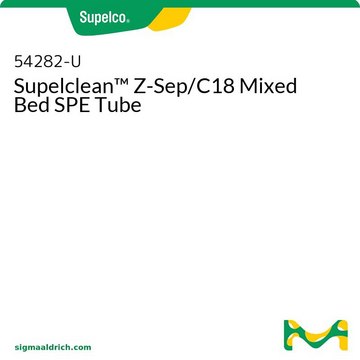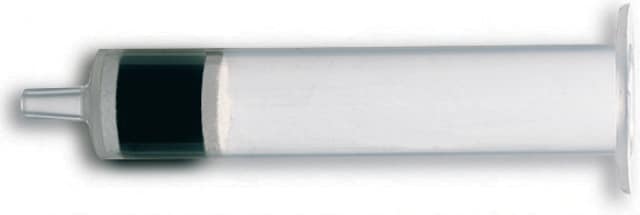55299-U
Supel™ QuE QuEChERS tube
Z-Sep+ Bulk, pkg of 20 g
Synonym(s):
QuEChERS
About This Item
Recommended Products
product name
Supel™ QuE, Z-Sep+ Bulk, pkg of 20 g
material
polypropylene tube
Quality Level
product line
Supel™
composition
Z-Sep+ Bulk
packaging
pkg of 20 g
technique(s)
QuEChERS: suitable
surface area
480 m2/g
matrix
silica gel base material
matrix active group
zirconia-based phase
particle size
50 μm
pore size
70 Å pore size
application(s)
food and beverages
Looking for similar products? Visit Product Comparison Guide
General description
Using the QuEChERS method, food/agricultural samples are first extracted with an aqueous miscible solvent (e.g., acetonitrile) in the presence of high amounts of salts (e.g., sodium chloride and magnesium sulfate) and/or buffering agents (e.g. citrate) to induce liquid phase separation and stabilize acid and base labile pesticides, respectively. Upon shaking and centrifugation, an aliquot of the organic phase is subjected to further cleanup using SPE. Unlike traditional methods using SPE tubes, in dispersive SPE, cleanup is facilitated by mixing bulk amounts of SPE (e.g., Supelclean PSA, ENVI-Carb, and/or Discovery DSC-18) with the extract. After sample cleanup, the mixture is centrifuged and the resulting supernatant can either be analyzed directly or can be subjected to minor further treatment before analysis.
Supelco carries a line of vials and centrifuge tubes containing pre-determined amounts of salts and SPE sorbents to support the most common method configurations used today.
Other Notes
Z-Sep+ is recommended for cleanup of samples containing greater than 15% fat.
Legal Information
Storage Class Code
11 - Combustible Solids
WGK
nwg
Flash Point(F)
Not applicable
Flash Point(C)
Not applicable
Choose from one of the most recent versions:
Already Own This Product?
Find documentation for the products that you have recently purchased in the Document Library.
Customers Also Viewed
Protocols
Supelco's Z-Sep+ sorbent effectively removes fat and pigment interferences from avocado, with good pesticide recoveries; it removes more matrix than traditional PSA/C18 sorbent, and produces a lower background for GC-MS analysis.
GC Analysis of Polynuclear Aromatic Hydrocarbons (PAHs) in Salmon on SPB®-608 (20 m x 0.18 mm I.D., 0.18 µm) after QuEChERS Cleanup using Supel™ QuE Z-Sep, Fast GC Analysis
Chromatograms
suitable for GC, application for SPEsuitable for GC, application for SPEOur team of scientists has experience in all areas of research including Life Science, Material Science, Chemical Synthesis, Chromatography, Analytical and many others.
Contact Technical Service






